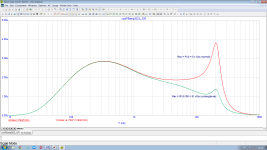One could argue that an "ideal" solution might be a Linkwitz transform (which would have to be custom designed for each cartridge + tonearm combination) with maybe another pole in the feedback. But an immediate A/D transfer would have other benefits, like manual editing for clicks and pops and such. And any desired compensation for geometric issues, cartridge RLC loading, etc. Not very DIY friendy, but some advanced folk like Scott Dorsey were already doing it a few years ago.
In the analog world, what is the proposed noise penalty in the MvdG topography? It could easily be adjusted to the Nick Sukhov loading if that's the concern.
All good fortune,
Chris
In the analog world, what is the proposed noise penalty in the MvdG topography? It could easily be adjusted to the Nick Sukhov loading if that's the concern.
All good fortune,
Chris
DSP is digital domain ;-)DSP is the best tool.
I like Marcel`s "one opamp phono preamp" with 3d-order rumble HPF @input , I did something similar in April 1979 [ https://archive.radio.ru/web/1979/04/062/ ], but I do not like its noise penalty and relative complexity. imho simplest 1st order 7950 RC is enough for tonearm antiresonance, and also to comply with the requirements of the active IEC 60098 standard
The circuit of this thread https://www.diyaudio.com/community/...rworth-high-pass-included.413649/post-7927611 doesn't look anything like your circuit and it hardly has any noise penalty. There is some noise voltage drop across the input coupling capacitor, but it is negligible for all practical purposes, and for the second-order case, when you don't care about what happens below 1.3 Hz, you can also replace the input coupling capacitor with a short.
But a simple, -6dB/oct 20Hz high pass would not help much with a typical peak near 10Hz. It is ineffective. DSP is the best tool.
View attachment 1434627
It looks to me like your subsonic hump is rather larger than the 5 dB to 10 dB of Nick. That's also consistent with the rather long ringing in your time domain plots.
For that reason the bulk of the solution really needs to be at the mechanical end of things. There's a guy here on diyAudio talking about driving the tonearm base up and down dynamically, although he's contemplating something commercial so hasn't given a lot of detail. Nakamichi once made a turntable that first measured, then automatically corrected, center hole eccentricity. Could these kinds of errors be corrected in DSP? I'd guess yes, but don't know.
Without any of that exotica, a suitable HPF is an obvious and do-able step. One reason the new MvdG topology is so compelling is that it includes this without any penalties. It also removes demand for any electrolytic capacitors in the signal path - not the end of the world, but not trivial - and DC servos.
All good fortune,
Chris
Without any of that exotica, a suitable HPF is an obvious and do-able step. One reason the new MvdG topology is so compelling is that it includes this without any penalties. It also removes demand for any electrolytic capacitors in the signal path - not the end of the world, but not trivial - and DC servos.
All good fortune,
Chris
That's the deep bass boost however you have to have a rumble filter around 5hz if you add this in
I meant your later "single op amp" version from the top picture here [ https://www.diyaudio.com/community/...om-opa1656-thread.377331/page-23#post-7954494 ] : С1 vs C1, C2 vs C2, R1 vs R1, main NF loop also looks like [ https://archive.radio.ru/web/1979/04/062/ ], where C1 C2 C3 form a third-order high-pass filter . Not 1:1 as yours, of course, but some similar. In 1979 I have not Microcap to make a fine simul, it appeared only 3 years after [ https://en.wikipedia.org/wiki/Micro-Cap ]... , and your brilliant active cooling idea only 24 years after ...The circuit of this thread https://www.diyaudio.com/community/...rworth-high-pass-included.413649/post-7927611 doesn't look anything like your circuit and it hardly has any noise penalty
Last edited:
I see, that was just my attempt to explain to JRA why adding a Sallen and Key network to the input of a phono preamplifier is not very good for noise.
To the best of my knowledge, the electrically cold resistance/electronic cooling/synthesized loading/whatever you want to call it was invented by William Spencer Percival in 1939. My article from 64 years later just shows two implementations of it.
To the best of my knowledge, the electrically cold resistance/electronic cooling/synthesized loading/whatever you want to call it was invented by William Spencer Percival in 1939. My article from 64 years later just shows two implementations of it.
Yes. And somewhere in between our late colleague Bohumil Sýkora made an implementation as well:To the best of my knowledge, the electrically cold resistance/electronic cooling/synthesized loading/whatever you want to call it was invented by William Spencer Percival in 1939. My article from 64 years later just shows two implementations of it.
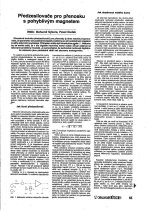
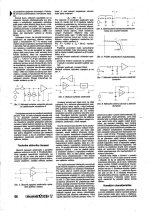
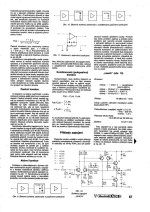

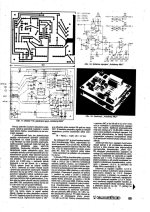
Percival thought his electrically cold resistance was mostly of academic interest, but it is used all over the place in LNA designs for receivers nowadays, and occasionally in phono preamplifiers. The oldest article about its use in phono preamplifiers I know is a 1978 AES article from Hoeffelman and Meys, but I recently learned via this forum that essentially the same configuration as that of Hoeffelman and Meys was already used by Dual in an amplifier from the late 1960's.
"Das tue ich gerne, von ganzem Herzen akzeptiert".The world is in great peril, but this forum isn't the place for my laments. Please accept my comments as an attempt at gallows humor.
All good fortune,
Chris
We all must avert the impending disaster—and also protect our more intellectually average fellow citizens from themselves.
Thank you Chris,
and all the best to you and your family,
HBt.
#
What was the thread about? The 20Hz high pass! Let's go back to topic.
Because the phono playback is only part of a whole system's response with other elements added (or multiplied, depending on how you calculate) including other electronics (let's call them unimportant), speakers and room. Let's also call the room's response outside of our control, leaving the speaker as common to all sources. I would then argue that the phono playback should be made to mitigate its liabilities to best make it compatible with modern, flawless-at-low-frequency, sources.
What should be the playback system response (near field, ignoring the room) for an ideal (digital source) or best-accomodation phono, accepting that the phono (or tape!) will have some limitations?
I once had an opportunity to make a poorly constructed, brief (about a month), non-blinded, not reproducible, possibly/probably room specific, maybe not, test of a "favorite" system fundamental resonance. The speakers were the Nearfield Acoustics with two twin 18" woofers for each channel in acoustically small sealed (second order) chambers, with room-tall driver arrays (yeah, sounds crazy, but they were actually the best speakers I've ever heard in most respects) for mids and tweeters. So they needed to be EQ'd for low frequencies, having a native response of IIRC about 85 or 90 Hz at a Q a little over 1. Don't quote me, but in that range. (Yes, I did measure them.) These big woofers were designed to be driven by dedicated amplifiers through a provided electronic crossover, which I complained about, and hoped to correct. 80+kilobucks US in 2001, Absolute Sound choice of best speaker ever, etc.
My friend Maxie had the resources to get a pair of the models shown in Las Vegas to stop here for evaluation after the show. I was attached to Nearfield when we had rooms at both "high-end" hotels, where we showed with the Kevins of VAC and with an Australian company that insisted on their own exotic mains supply that didn't work until Sunday. War stories - I digress. Maxie has the best of everything, room, all Spectral electronics, ears, taste, etc.
I experimented with system response (in that particular situation, and very near field - within two meters) and found a reasonable agreement that a system Q of 0.5 at 8Hz sounded pretty good to us, probably biased. And with a second order Linkwitz-Riley crossover to the upper range cabinet corrected passively from native and a Linkwitz transform plus second order L-R low-pass to the woofer amplifier.
Bet you're sorry you asked,
Chris
What should be the playback system response (near field, ignoring the room) for an ideal (digital source) or best-accomodation phono, accepting that the phono (or tape!) will have some limitations?
I once had an opportunity to make a poorly constructed, brief (about a month), non-blinded, not reproducible, possibly/probably room specific, maybe not, test of a "favorite" system fundamental resonance. The speakers were the Nearfield Acoustics with two twin 18" woofers for each channel in acoustically small sealed (second order) chambers, with room-tall driver arrays (yeah, sounds crazy, but they were actually the best speakers I've ever heard in most respects) for mids and tweeters. So they needed to be EQ'd for low frequencies, having a native response of IIRC about 85 or 90 Hz at a Q a little over 1. Don't quote me, but in that range. (Yes, I did measure them.) These big woofers were designed to be driven by dedicated amplifiers through a provided electronic crossover, which I complained about, and hoped to correct. 80+kilobucks US in 2001, Absolute Sound choice of best speaker ever, etc.
My friend Maxie had the resources to get a pair of the models shown in Las Vegas to stop here for evaluation after the show. I was attached to Nearfield when we had rooms at both "high-end" hotels, where we showed with the Kevins of VAC and with an Australian company that insisted on their own exotic mains supply that didn't work until Sunday. War stories - I digress. Maxie has the best of everything, room, all Spectral electronics, ears, taste, etc.
I experimented with system response (in that particular situation, and very near field - within two meters) and found a reasonable agreement that a system Q of 0.5 at 8Hz sounded pretty good to us, probably biased. And with a second order Linkwitz-Riley crossover to the upper range cabinet corrected passively from native and a Linkwitz transform plus second order L-R low-pass to the woofer amplifier.
Bet you're sorry you asked,
Chris
Last edited:
Yes, I know (you sent me pdf files a few years ago). And your active cooling phono pre as well as Bohumil Sýkora`s and later D.Self were used for MM phono preamp, where -20 dB FR @ 20kHz significantly reduces the effect of cold resistance. But it is much more effective in tape playback amps with a more elevated high frequency response, see circiut in MC12 here https://www.patreon.com/posts/usilitel-s-uv-80024956 [ and attched file, red line normal, green - with active cooling ], up to 5...6 dBA vs approx. 2 dB in MM preamp.Percival thought his electrically cold resistance was mostly of academic interest
Attachments
Pavel, can you clarify in your very interesting screenshots what tonearm and cartridge were in each picture?The nature of issue is not the steady state one, so the transient response of such filter is better not to imagine.
View attachment 1434587 View attachment 1434588 View attachment 1434589 View attachment 1434590 View attachment 1434591
Nikolai, the tonearm would be that of Technics SL-1200MK2 and the cartridge Ortofon 2M blue.
- Home
- Source & Line
- Analogue Source
- antiRIAA7950
